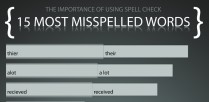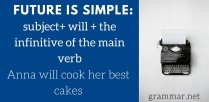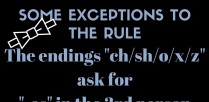Misplaced, omitted, sprinkled like confetti on the page, usurped by punctuation marks like the semicolon and colon—if commas could talk, these would be their complaints. The basic rules that follow may clarify some of the confusion and help writers sidestep common misapplications.
Commas are used to set off items in a series of three or more, or to separate two adjectives preceding a noun:
Sue bought sugar, milk, and eggs at the store.
The hot-air balloon rose slowly into the bright, blue sky.
They’re also useful for setting off non-essential or explanatory clauses, expressions that interrupt a sentence, introductory words and phrases, and nouns of direct address:
Valentine’s Day, which fell on Monday this year, was cold and rainy. (non-essential)
Paris is, I believe, one of the most romantic cities in the world. (interrupter)
The great writer, C. S. Lewis, wrote many books. (explanatory)
Oh, look at the beautiful sunset! (introductory word)
Kicking off her shoes, Pat dips her toes into the chilly ocean water. (introductory clause)
Adam, are you going for a swim? (direct address)
Commas separate the items of addresses or dates, follow a letter’s salutation or its closing, and set off titles. In the set of sentences below illustrating this cluster of rules, note the one exception: when parts of a date or address are omitted, the comma is omitted as well.
On December 16, 2010, a new museum opened at 2233 S. Hampton Street, Dallas, Texas.
The students visited the museum on Hampton Street in January 2011.
Dear Joseph,
Highest regards,
Franklin Miller, M.D., will speak at the San Diego conference on May 24.
Whenever two independent clauses are joined in one sentence by a coordinating conjunction (and, but, for, or, nor, so, yet), use a comma after the first clause and before the conjunction. However, if the first independent clause is followed by a clause without a subject, do NOT use a comma. Examples of both instances:
Backpacking around Australia was one of his dreams, but the cost of the plane ticket made him think twice about going.
The skydiver jumped from the plane and waited five seconds to pull the ripcord.
When choosing to punctuate a compound sentence (one with two independent clauses), semicolon use is another option. Like the comma, a semicolon and colon both “give pause,” but the semicolon is the choice for separating two complete thoughts when you don’t want to use a conjunction:
Jennifer visited Italy with her family this summer; she will tour Japan with friends in early spring.
Here is one final suggestion for improving punctuation: proofread work for comma splices. A comma splice occurs when two independent clauses are separated by a comma only. “Call me tomorrow morning, I will give you my answer then,” should be written one of these two ways:
1. Call me tomorrow morning; I will give you my answer then.
2. Call me tomorrow morning, and I will give you my answer then.
Of course, there’s always an exception to the rule. When the phrases are short, a comma is preferable to the semicolon:
Easy come, easy go.
Test your knowledge of comma usage by reading back through this article. Make a list of the commas used and see if you can explain why they are there, according to the rules presented. Who knows, as tricky as the use of commas can be, the writer of this article may have accidentally misplaced one or two herself . . . happy hunting!








